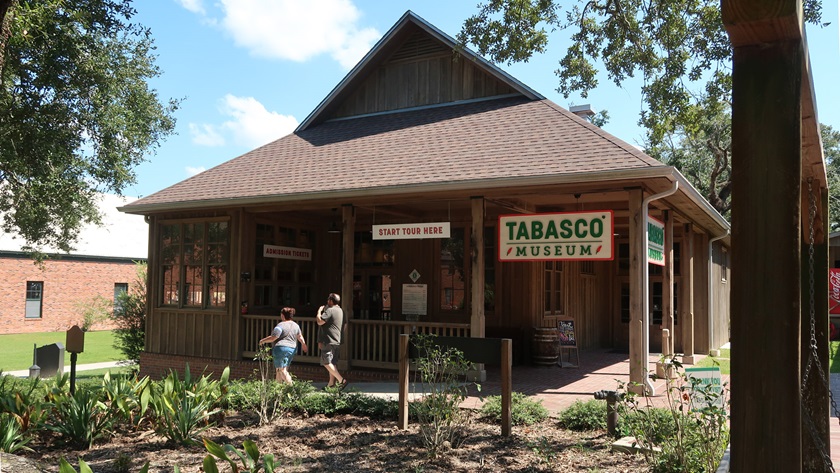Spice things up at the Tabasco factory
Avery Island, Louisiana
As the morning mist slowly dissipated, the low rumble of a radial engine overhead announced the arrival of the first of several seaplanes carrying tourists eager to visit Avery Island, Louisiana, the home of world-famous Tabasco sauce.
After landing out of sight on a narrow bayou nearby, Lyle Panepinto, one of the owners of Southern Seaplane Inc., idled his de Havilland Beaver amphibian around the bend and nosed up to one of several docks adjacent to the gated bridge leading to privately owned Avery Island.
This fall flight was routine for Panepinto, who operates air tours from a private airport and seaplane base at Belle Chasse, Louisiana, across the river from New Orleans. However, it was a new experience for the Seaplane Pilots Association (SPA) members and spouses who clambered out onto the floats, eager to start the short walk to the Tabasco factory tour.
They learned that, for the past 152 years, the iconic seasoning has been produced at only one place in the world—Avery Island—and by just one family—the descendants of Edmund McIlhenny.
Located in a remote area of Cajun country about two hours by car west of New Orleans, Avery Island is actually not an island in the traditional sense of the word. Instead, it is a 2,200-acre salt dome rising 160 feet above sea level and surrounded by swamps and bayous.
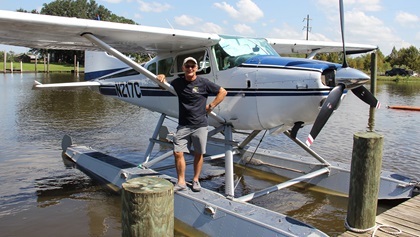 McIlhenny founded the McIlhenny Co., which produces Tabasco sauce, in 1868. A successful New Orleans banker until the Civil War ruined his business, he needed a fresh start, and that came when he moved to Avery Island, which had been owned since the 1830s by his wife’s family. In addition to being a sugar plantation for generations, salt for Confederate troops had been mined there.
McIlhenny founded the McIlhenny Co., which produces Tabasco sauce, in 1868. A successful New Orleans banker until the Civil War ruined his business, he needed a fresh start, and that came when he moved to Avery Island, which had been owned since the 1830s by his wife’s family. In addition to being a sugar plantation for generations, salt for Confederate troops had been mined there.
McIlhenny liked to garden, and the fertile soil and semitropical climate of the island proved perfect for cultivating some red pepper seeds from Mexico given to him by a friend. Significantly hotter than the cayenne peppers commonly used in other hot sauces, Tabasco peppers are unique and considered the gold standard.
After McIlhenny crushed the peppers and mixed them with vinegar and some of the island’s salt, the sauce was aged and bottled. Today the production process is much the same.
What eventually became known as Tabasco Original Red Pepper Sauce proved perfect for enhancing the bland diet common during the Reconstruction era in the South. Sales took off, and McIlhenny patented the sauce in 1870.
Since only a few drops of the pungent flavoring were needed to spice up a dish, McIlhenny used small cologne bottles as containers for his first few batches. Now found on the tables of most restaurants and in many homes, the distinctive two-ounce bottles with diamond-shaped red and green labels look very similar to the originals.
The highly automated Tabasco factory can produce over 700,000 bottles of sauce each day, and the tour is well worth the trip. The production facility comprises five large brick buildings as well as a museum, restaurant, and souvenir shop.
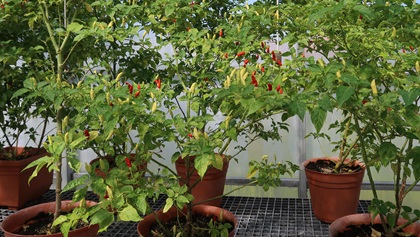 Many of the Tabasco workers, some of whom live on the island, come from families that have been employees of the company for generations.
Many of the Tabasco workers, some of whom live on the island, come from families that have been employees of the company for generations.
From seed to bottle, producing Tabasco sauce is a five-year process. And since worldwide sales long ago exceeded the amount of peppers that can be grown on Avery Island, specially selected seeds are now shipped to contract growers in Central and South America and Africa.
Although the bottling line does not operate every day, tours can include a chance to see the complete production process (the bottling line is not currently part of the tour because of COVID-19 restrictions). Hand harvested when they reach the perfect shade of red, the ripe peppers are crushed and mixed with salt by the growers. The resulting “mash” is shipped to Avery Island and aged in white oak whiskey barrels for three years in a huge warehouse. Afterward, it is blended with distilled vinegar and stirred in 1,800-gallon vats for two to three weeks.
Next, the sauce is strained to remove the pepper skins and seeds, and the finished product is ready to be bottled and shipped to over 190 countries. Each barrel yields around 10,000 small bottles of sauce.
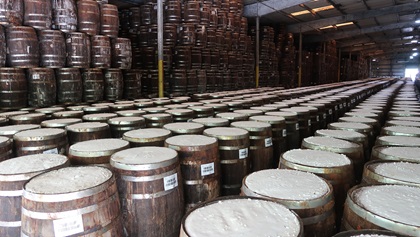 With the goal of putting Tabasco sauce on every table, clever marketing has been important to the growth of the company, which is still owned and run by sixth-generation family members. A few fans of the sauce even have tattoos of the logo.
With the goal of putting Tabasco sauce on every table, clever marketing has been important to the growth of the company, which is still owned and run by sixth-generation family members. A few fans of the sauce even have tattoos of the logo.
The company has had a connection with the U.S. military ever since Edmund’s son, John Avery McIlhenny, joined Theodore Roosevelt’s Rough Riders during the Spanish-American War. Since the 1980s, Tabasco has been included in most military MREs (Meals Ready-to-Eat).
Plan about two hours for the tour, including time to sample the iconic sauce at the tasting bar at the rear of the Tabasco Country Store. The large souvenir shop offers countless varieties of Tabasco-flavored products, including ice cream and soda.
Next door is a company-owned restaurant offering a wide menu of regional dishes that can be enhanced with the sauce, sometimes called “Cajun ketchup.”
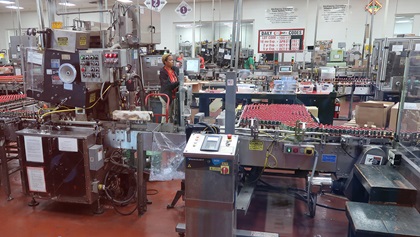 If you love Tabasco sauce, this culinary landmark is the place to visit. And to complete the Avery Island experience, pay extra to drive through Jungle Gardens, a 170-acre nature preserve developed on the island in 1935 by Edward McIlhenny, son of the founder. Alligators, deer, and snowy egrets are common sights.
If you love Tabasco sauce, this culinary landmark is the place to visit. And to complete the Avery Island experience, pay extra to drive through Jungle Gardens, a 170-acre nature preserve developed on the island in 1935 by Edward McIlhenny, son of the founder. Alligators, deer, and snowy egrets are common sights.
The closest general aviation airport to Avery Island is Acadiana Regional Airport at New Iberia, Louisiana, which is unique because the 8,000-foot paved runway is augmented by an adjacent 5,000-foot water runway. Rental cars are available, as is ride-sharing.
Abbeville Chris Crusta Memorial Airport is also near Avery Island and has the advantage of a Best Western Inn and Suites adjacent to the field. With advance notice, rental cars are available through Enterprise.
Aviators who want to spice up their Tabasco tour with some seaplane flying can contact Southern Seaplane Inc. In addition to air tours and charters, the company offers seaplane flight instruction.
